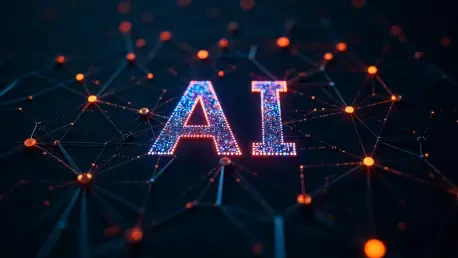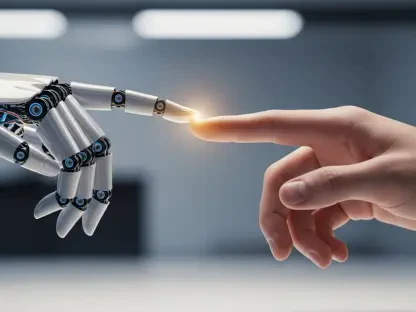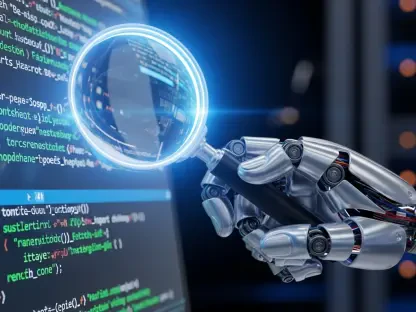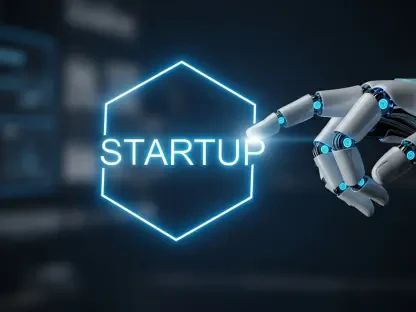What happens when a newcomer topples a titan in the high-stakes arena of artificial intelligence? In a seismic shift that has caught the attention of business leaders worldwide, Anthropic has surged past OpenAI to claim the top spot in enterprise AI market share, redefining how companies harness cutting-edge technology. This isn’t merely a change in rankings—it’s a bold statement about evolving priorities in the corporate world, where precision and trust now reign supreme. Dive into this unfolding story of innovation and competition that’s reshaping the landscape of business tech.
The Stakes of Enterprise AI Dominance
Why does a shift in AI providers send ripples through boardrooms globally? The answer lies in the transformative power of artificial intelligence for businesses, where the right tools can streamline operations, boost productivity, and unlock innovation across sectors like finance, healthcare, and tech. With billions of dollars invested in AI integration, the provider a company chooses becomes a make-or-break decision. Anthropic’s rise to a 32% market share, overtaking OpenAI’s 25%, signals a critical pivot in enterprise preferences, highlighting a demand for specialized solutions over broad, consumer-focused platforms.
This transition isn’t just about numbers; it’s about the future of work itself. Enterprises are increasingly reliant on large language models (LLMs) for complex tasks, from automating customer support to driving software development. When a company like Anthropic gains ground, it reflects a deeper alignment with business needs—needs that prioritize reliability and tailored performance. This shift sets the stage for a broader conversation about how AI giants must adapt to a divided market, balancing consumer appeal with corporate demands.
Unpacking Anthropic’s Meteoric Rise
How did Anthropic climb to the forefront so swiftly? Data reveals a compelling story: with a commanding 42% share in enterprise coding applications compared to OpenAI’s 21%, Anthropic has become the go-to for developers tackling intricate projects. The release of Claude 3.5 Sonnet in mid-2024, followed by Claude 3.7 Sonnet earlier this year, has fueled this ascent, offering models that excel in precision and efficiency. These advancements have positioned Anthropic as a leader in delivering tools that businesses can depend on for mission-critical work.
Beyond coding, Anthropic’s strategy focuses on customization, crafting solutions that cater directly to enterprise requirements rather than casting a wide net. This approach contrasts sharply with competitors who split focus between consumer and business markets. Meanwhile, broader trends show Google gaining traction in AI offerings, while open-source models see declining usage, dropping from 19% to 13% in enterprise workloads this year. Anthropic’s emphasis on secure, proprietary systems resonates with companies wary of data risks, cementing its edge in a cautious market.
The numbers paint a clear picture of strategic alignment. Over half of enterprises surveyed express a preference for closed models, avoiding open-source alternatives due to security concerns. Anthropic has capitalized on this sentiment, building trust through robust, controlled environments that safeguard sensitive operations. This targeted focus distinguishes the company in a crowded field, offering a glimpse into why businesses are flocking to its platforms.
Industry Voices Echo the Change
Beyond statistics, the buzz within the tech community adds color to this shift. Enterprise developers and startup founders increasingly cite Anthropic’s Claude as their preferred tool for professional tasks, praising its consistency over OpenAI’s ChatGPT in demanding scenarios. A lead engineer at a growing software company noted, “When deadlines loom, Claude delivers cleaner code with less rework—it’s a game-changer for our team.” Such feedback underscores a growing consensus that reliability trumps versatility in corporate settings.
This sentiment isn’t isolated. Reports indicate a clear split in the AI market, with OpenAI retaining dominance in consumer applications—handling over 2.5 billion daily prompts on ChatGPT—while Anthropic captures the enterprise space. A product manager from a financial firm shared, “For data-heavy tasks, we’ve switched to Claude; it handles nuance better than anything else we’ve tried.” These firsthand accounts validate the data, showing a deliberate pivot among businesses toward tools built for their unique challenges.
The divide also reflects differing priorities. While consumer AI thrives on accessibility and scale, enterprise users demand performance under pressure. Anthropic’s ability to meet these expectations has sparked conversations at industry conferences, where leaders debate whether this trend will push other providers to narrow their focus. The voices from the field suggest that this isn’t a fleeting change but a fundamental realignment of market dynamics.
Decoding the Enterprise AI Market Trends
Stepping back, the broader landscape reveals telling patterns that frame Anthropic’s success. The preference for closed AI systems is stark, with many enterprises steering clear of open-source options due to vulnerabilities in handling proprietary data. This caution has reshaped provider standings, benefiting companies like Anthropic that prioritize secure, controlled models over flexible, public alternatives. The shift away from open-source tools signals a maturing market where risk management often outweighs cost savings.
Competitive dynamics add another layer to this narrative. While Anthropic leads in enterprise adoption, OpenAI’s consumer stronghold remains unshaken, creating a dual-market reality. Google, meanwhile, continues to carve out space with its own AI advancements, appealing to businesses seeking integrated ecosystems. This fragmentation suggests that no single provider will dominate all facets of AI, pushing companies to strategically align with partners that match their operational focus.
For enterprises, these trends highlight the importance of adaptability. Staying ahead means not just adopting AI, but choosing the right flavor of it. Whether it’s Anthropic’s specialized models for technical precision or OpenAI’s broad reach for customer engagement, the market offers diverse paths. Understanding these currents is crucial for businesses aiming to leverage AI as a competitive advantage rather than a mere add-on.
Practical Guidance for Businesses in the AI Era
Navigating this evolving terrain requires a clear-eyed approach for companies integrating AI. Start by pinpointing exact needs—does the focus lie in coding, data analysis, or customer interaction? Testing tools like Claude against alternatives can reveal which provider best suits specific workflows, especially for technical demands where Anthropic shines. This hands-on evaluation often uncovers efficiencies that generic solutions miss.
Security remains a non-negotiable priority. With many enterprises wary of data leaks, opting for closed systems offers peace of mind, particularly in regulated industries like healthcare or finance. Anthropic’s proprietary models align well with this mindset, providing robust safeguards for sensitive information. Companies must weigh these benefits against the flexibility of other platforms to ensure alignment with long-term goals.
Finally, agility is key in a fast-moving field. Keeping tabs on model updates and competitor shifts ensures that chosen tools remain relevant. For businesses straddling consumer and enterprise needs, a hybrid strategy—pairing Anthropic’s precision with OpenAI’s reach—might optimize outcomes. Staying proactive, rather than reactive, positions firms to capitalize on AI’s potential as the market continues to transform.
Reflecting on a Historic Shift
Looking back, Anthropic’s ascent over OpenAI in the enterprise AI realm marked a turning point that few anticipated. The journey from underdog to leader showcased how innovation, paired with a laser focus on business needs, could redraw competitive lines in a matter of months. This historic shift underscored the growing divide between consumer and corporate AI demands, revealing a market hungry for specialized solutions.
For businesses that adapted, the next steps became clear: invest in testing and tailoring AI tools to fit unique operational challenges. Exploring hybrid models to balance internal efficiency with external engagement offered a path forward. As the dust settled, the lesson lingered—staying ahead meant embracing change, not resisting it.
Beyond immediate actions, the future demanded vigilance. Companies had to commit to ongoing evaluation of AI providers, ensuring alignment with evolving security and performance standards. Partnering with innovators like Anthropic, while keeping an eye on broader trends, promised to sustain competitive edges. This era of transformation, once navigated, opened doors to unprecedented growth and capability.









